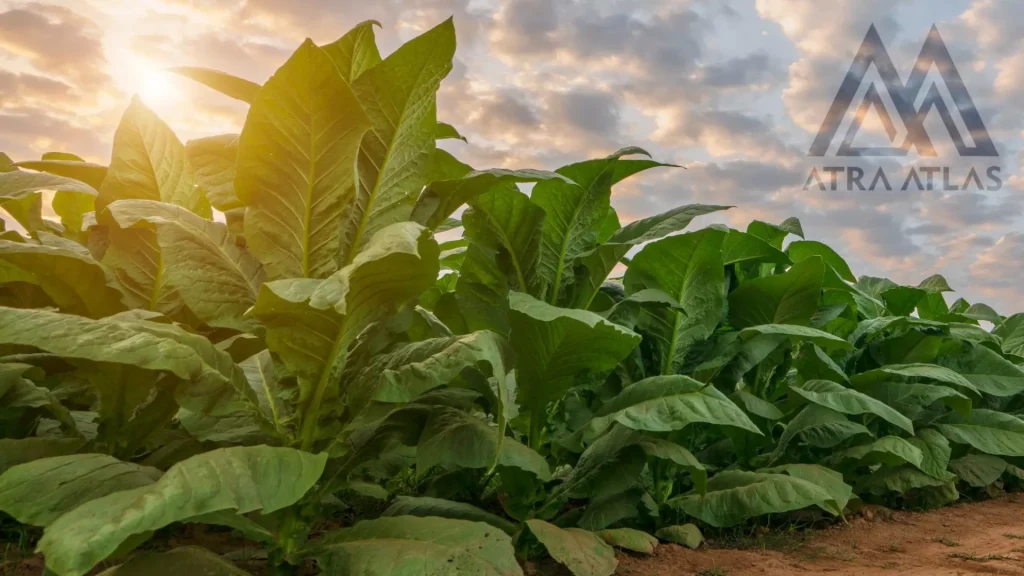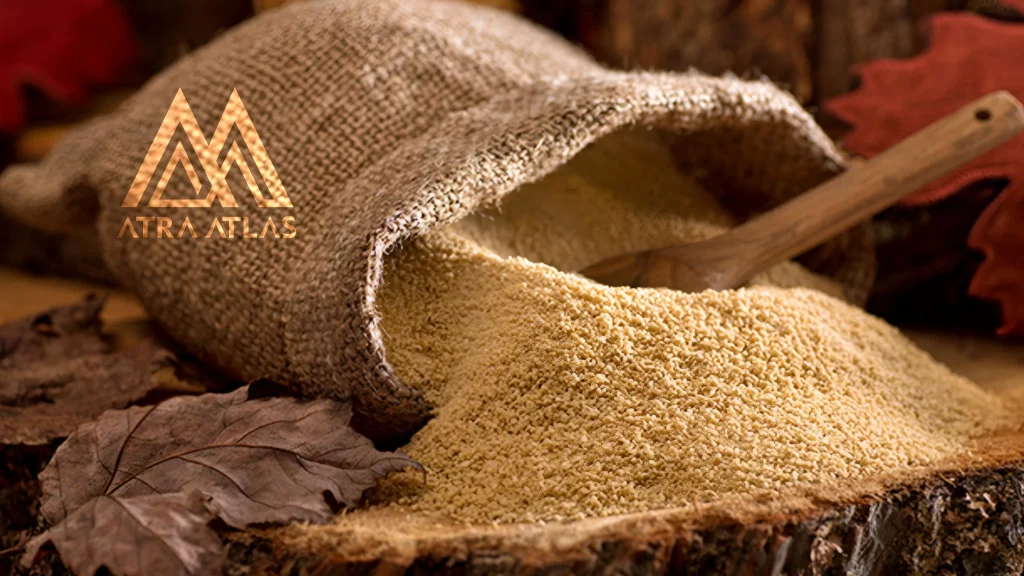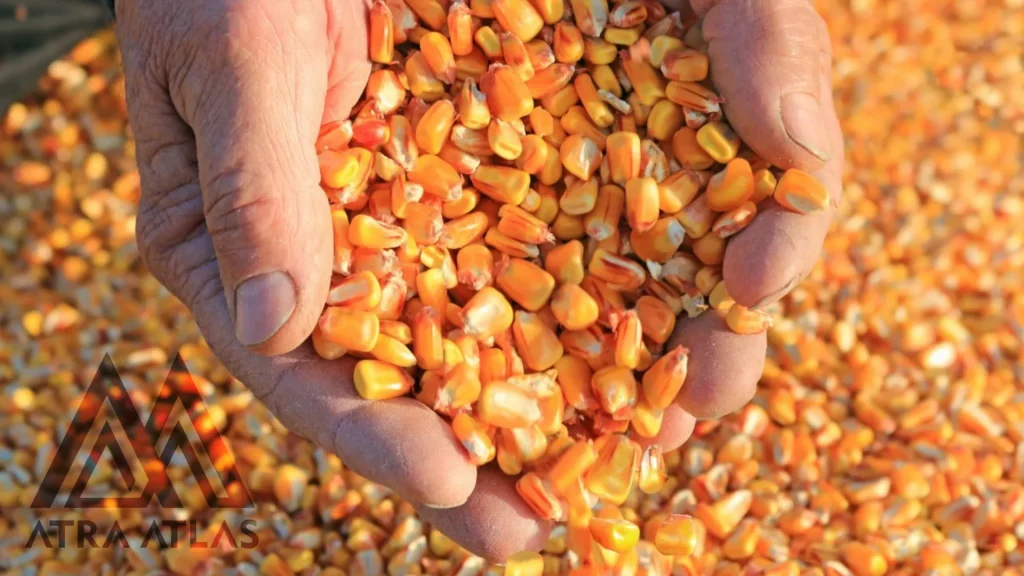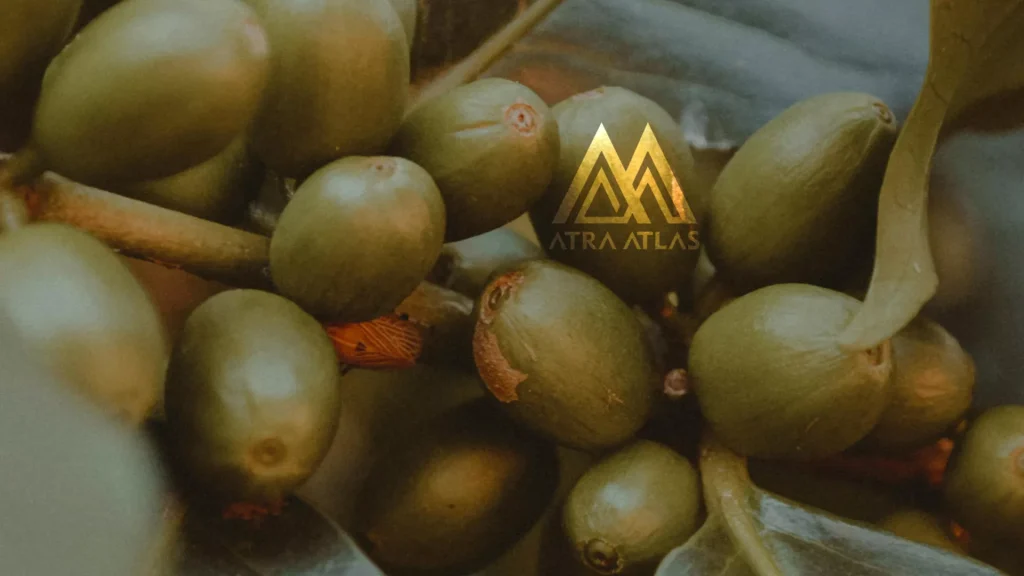Soybean Seeds, Corn Seeds, Coffee Seeds, Tobacco Seeds

_ Tobacco seeds
Introduction of tobacco plant
Tobacco, also known as Tutu, is an annual plant that emits a strong odor from all its parts and is used as an insect repellent in fields.
Characteristics of the Tobacco Plant
Short Sticky Hairs: Tobacco has very short, sticky hairs.
Initial Cultivation Location: It was initially cultivated in South America but can now be grown worldwide.
Root: This plant has a straight root that, depending on climatic conditions, reaches a height of 40 to 60 centimeters.
Leaves: Tobacco leaves are relatively large and petiole-less, and they can be heart-shaped, egg-shaped, lance-shaped, curved, or flat.
Flowers: The flowers of this plant are hermaphrodite and tubular and end in 5 pointed parts.
Fruit: Tobacco fruit is a capsule and oval in shape that contains seeds. The seeds are very small, somewhat oval-shaped, and dark red. If stored under suitable conditions, the seeds will retain their viability for up to 1 year.
How to plant tobacco seeds
Tobacco can grow in a wide range of climates, but it requires a frost-free period of 90 to 120 days from planting to the last leaf harvest. The optimal average daily temperature for growth is between 20 to 30 degrees Celsius. A dry period is necessary for the leaves to mature and be harvested, as excessive rainfall results in thin and light leaves.
Steps for Planting Tobacco Seeds
Starting the Planting:
Plant tobacco seeds about 8 weeks before the last frost in a seed tray or another container.
Planting Environment:
If you are in a cold area, plant the tobacco seeds indoors and transplant the seedlings to the main ground.
Surface Planting:
Tobacco seeds are small, so they should be planted superficially.
Type of Soil:
The soil where you plant tobacco seeds should contain nitrate, phosphorus, and potassium. Scatter the seeds on the soil, do not press them, and do not cover the seeds with soil.
Initial Watering:
Spray them with water, cover with clear plastic, and place the seed tray in a warm and sunny place at room temperature. Germination starts after 6-14 days.
Post-Germination Care
Transferring to a Larger Container:
When the seedlings develop their first true leaves, they are ready to be transferred to a larger container. Place them in a warm and sunny location and water regularly.
Transferring to Outdoors:
When the seedlings reach a height of 15 centimeters, you can plant them outdoors. Ensure the spring frost has passed, then plant the seedlings in a sunny spot in your garden.
Planting Distance:
When planting tobacco seeds, space them 10 centimeters apart. As they grow, thin them so that there is at least 60 centimeters between plants and 90 centimeters between rows. Add some fertilizer or compost and plant them well in the soil.
Tobacco storage conditions
For growing and cultivating tobacco (Tutun), you should pay attention to the following:
Light Requirement for Tutun
Sunlight: Tobacco needs light to grow, and if it cannot receive enough light during the day, it will gradually wilt. The best place to put a pot containing a tobacco plant is by south-facing windows.
How to Fertilize Tobacco
Tobacco has a high need for nutrients, so after transferring it to a larger pot or garden, use compost in the soil mix and periodically apply nitrogen and potash fertilizers.
How to Water Tobacco
If your area is experiencing drought, you should install an irrigation system to prevent the soil from becoming too dry, as this hinders the growth of Tutun. After rainfall, use less water. The structure of Tutun leaves is such that they collect water at the plant’s base.
Suitable Soil for Tutun
Tobacco is a very hardy plant that grows in any type of soil. Light, sandy, and loamy soils with good drainage are suitable for the growth of this plant.
Tobacco storage conditions
For growing and cultivating Tobacco, you should pay attention to the following:
Suitable Soil
This plant needs light, sandy, and loamy soils with good drainage for its growth.
Required Temperature
15 to 30 degrees Celsius is the optimal temperature for the growth of Tobacco.
Watering Amount
Tobacco requires moderate and regular watering and should be watered 3 to 4 times a week.
Suitable Light
This plant needs full and direct sunlight for its growth.

_ Soybean Seeds
Soybean seed: one of the most important agricultural seeds
General Characteristics of Soybeans:
Soy is an annual herbaceous plant that grows in a bushy form. This plant has a lot of foliage and is classified into three categories: fodder, legumes, and oilseeds. Soy, in addition to its food use, also has many medicinal and therapeutic properties.
Structure and Characteristics of the Soy Plant
Root: Soy has a main root and several lateral roots that penetrate up to 150 centimeters into the soil.
Stem: It has a cylindrical and hairy stem, with the base usually being woody.
Leaves: It has oval-shaped and hairy leaves that consist of three broad leaflets and are greenish-yellow or dark green in color.
Flowers: Small white or purple flowers that grow in clusters on the branches and form where the lateral branch meets the main branch.
Seeds: The seeds are oval-shaped and come in yellow, green, and brown colors, contained in pods, each of which holds 2 to 3 seeds.
Soy Harvesting
Soy is harvested when the plant’s leaves are dry, and the pods turn yellow. This stage indicates that the seeds are fully ready for harvest.
How to Plant Soybeans:
Soy, an annual leguminous plant from the pea family, is the most economically important bean in the world, providing plant protein and raw materials for hundreds of chemical products for millions of people.
Nutritional Features of Soy
Soy has more protein compared to other oilseeds, and its protein is similar to animal protein.
Structure and Growth of the Soy Plant
Bushy Growth: Soy grows in a bushy form and has branched leaves and stems.
Plant Height: Depending on planting conditions, the height of this plant reaches 50 centimeters to 2 meters.
Growth Conditions: Soy grows in various types of soil, but it thrives and becomes very productive in rich soils with good drainage.
Soy Harvesting
Soy is harvested when the plant’s leaves are dry, and the pods turn yellow.
Soybean seed planting:
The planting time for soy seeds is in the spring after the end of the spring frost. Before planting, plow the soil and mix it with organic materials such as compost or well-rotted animal manure. Plant the soy seeds directly in the ground.
Method of Planting Soy Seeds
Planting Depth: The planting depth for soy seeds should be 3 to 5 centimeters.
Planting Distance: The planting distance for soy seeds should be 20 centimeters, and the distance between planting rows should be 45 centimeters.
Post-Planting Care
Watering: After planting, moisten the soil and keep it moist until germination. Soy seed germination takes 2 to 7 days.
Sunlight: Plant soy in a sunny location (at least 6 hours of direct sunlight daily).
Transplanting: You can initially grow soy seeds in seedlings and then transfer the saplings to the ground, but direct planting is recommended.
Watering Amount: Watering 2 to 3 times a week is sufficient for the soy plant.

_Corn Seeds
Corn seed: importance and characteristics
You might find it interesting to know that the global corn seed market was valued at $26.75 billion in 2023 and is expected to increase to $41.57 billion by 2030.
Importance of the Corn Seed Market
The corn seed market, whether for fodder seeds or food seeds, has become very important. A skilled farmer, before purchasing seeds, considers their consumer market and examines the type of corn needed in their agricultural region.
Properties and Applications of Corn
Livestock and Poultry Industry: Due to its special properties, corn has recently attracted the attention of people working in the livestock and poultry industry.
Dairy cows require a higher energy intake to increase their yield, which cannot be obtained solely from fodder. Using corn due to its high energy content in the cows’ diet is effective in producing more milk.
Corn, as livestock and poultry feed, has high digestibility and is suitable for feeding livestock and birds. Using this product in any ratio in the diet of livestock and poultry does not cause any digestive problems.
Buying Corn Seeds:
Corn seeds and corn grain are vital agricultural products with a grand history originating from North America and Central America, spreading worldwide. Corn is recognized as one of the most important nutritional and industrial sources.
Characteristics of Corn Seeds
Plant Family: Corn belongs to the Poaceae family with the scientific name Zea mays.
Variety: This plant has a great variety in its types and applications.
Importance of Buying Corn Seeds
Buying corn seeds is very important because this plant:
Is a primary source of livestock and poultry feed.
Due to its high economic value and wide applications, it is used in various industries.
Has high digestibility and is suitable for feeding livestock.
Tips for Buying Corn Seeds
When buying corn seeds, consider these tips:
Seed Quality: The quality of corn seeds is very important and should be purchased from reputable sources.
Type of Corn: Choose the appropriate type of corn seed based on the needs of your agricultural region.
Climatic Conditions: Ensure that the selected corn seed is compatible with your region’s climatic conditions.
What is Corn?
Corn is an annual grass plant from the Poaceae family. This family includes grass plants and cereals, which encompass many important agricultural crops such as wheat, barley, and rice. Corn is classified under the Panicoideae subfamily.
Scientific and Local Names
This plant is known by its scientific name Zea mays L, and other well-known names include Belal or Joari.
Characteristics and Applications of Corn
Plant Structure: Corn is a plant whose main usable part is its yellow ears, which contain edible grains.
Nutritional Value: These grains are used as a rich source of carbohydrates, fiber, protein, and vitamins in the diet of humans and animals.
Variety of Applications: Due to the diverse applications of corn, corn seeds have significant economic and nutritional importance and are recognized as one of the key agricultural products worldwide.
Corn Family Classification:
Corn is divided into two main types: Sweet Corn and Field Corn. Each of these types has its own unique characteristics and uses.
Sweet Corn
Applications: Primarily used for food consumption.
Features: Sweet Corn has a sweet and soft taste and is usually consumed fresh or canned.
Field Corn
Applications: Mainly used for the production of animal feed, starch, and corn oil.
Features: Field Corn has harder kernels and higher protein content and is used for industrial purposes and animal feed.
Reasons for Planting Corn:
Planting corn seeds is done for various reasons that include economic, nutritional, and industrial aspects. Here are some of these reasons:
Source of Nutrition for Humans and Animals
Corn seeds or grains are a primary source of carbohydrates, protein, and fiber. Corn grains are directly used in human food and also for preparing animal feed.
Energy and Bioenergy Production
Corn is used as a powerful source of energy, especially in the production of electricity and bioenergy. You might find it interesting to know that corn grains burn quickly and release energy.
Food Industry
Corn is used in the production of industrial products such as starch, corn oil, corn flour, and other food products. Corn is also used in the production of food products like starch, corn oil, cookies, corn flour, popcorn, and other food products.
Sustainable Agriculture
Due to its characteristics, corn is considered a sustainable plant in agriculture. This plant is introduced as an important option for sustainable agriculture due to its ability to grow in different climatic and soil conditions.
Plastic Production
Corn is used as a natural source for producing biodegradable and decomposable plastics.
Activated Charcoal Production
By decomposing corn grains, activated charcoal is produced, which is used in the purification of water and air and in the pharmaceutical industry.
Chemical Products
Corn products are used in the production of chemical substances such as glycol, methanol, and lactic acid.
Corn Cultivation Conditions:
Planting corn seeds requires specific conditions to achieve optimal performance. Below are the basic conditions for planting corn seeds:
Climate
Optimal Temperature: Corn seeds are somewhat sensitive to low temperatures and achieve the highest yield in regions with warm and humid summers. Temperatures between 24 to 32 degrees Celsius are ideal for the optimal growth of corn seeds.
Soil
Soil Quality: The soil should have a good structure, aeration, and proper drainage. Clayey or sandy soils with light texture are better choices for growing corn seeds.
Water and Weather
Water Requirements: Corn seeds require a lot of water and should be grown in areas with sufficient rainfall or with proper irrigation if necessary. To increase yield, it is important that during critical periods such as flowering and pollination, the weather is favorable. Extreme cold and heat can disrupt pollination, resulting in incomplete and irregular kernel formation.
Planting Method
Planting Methods: Corn seeds can be planted directly in the soil or as seedlings. Plant spacing and depth also have a significant impact on the future performance of the plant. The most suitable spacing between plants, depending on the region and the selected variety, is 25 to 35 centimeters.
Pest and Disease Management
Pest Management: Proper management of pests and diseases at the right time and using effective pesticides can prevent yield reduction.
Variety Selection
Choosing Suitable Varieties: Choosing suitable and timely varieties can significantly increase productivity. Paying attention to these conditions and fully adhering to the needs of corn seeds at different growth stages is the key to success in planting this crucial crop.
The Largest Corn-Producing Countries:
Corn is one of the major and vital agricultural products globally and is produced in various countries. Below are some of the largest corn-producing countries:
United States
The United States is one of the largest corn producers in the world. The U.S. is recognized as one of the main agricultural regions globally, and corn seed is one of its major crops.
China
China is also one of the largest corn-producing countries. Agriculture is one of the main industries of China’s economy, and corn seed is a key agricultural product in this country.
Brazil
Brazil is another major corn producer worldwide. Due to its favorable and extensive climate conditions for agriculture, Brazil provides significant corn seed production. For importing corn seed from Brazil, you can contact our managers at Atra Atlas Trading Company.
Argentina
Argentina is one of the major corn-producing countries in South America. The production of agricultural products, including corn seed, is a significant part of its economy.
India
India is also one of the major corn seed producers globally. Agriculture is a central pillar of India’s economy, and corn is an important product in its production portfolio.
Indonesia
Indonesia, a series of islands in Southeast Asia, is recognized as a significant corn producer in the region.
How to Plant Corn Seeds:
If you have never experienced planting corn seeds before, it is better to obtain sufficient information on how to plant this crop before starting.
Preparation and Planting Steps
Soil Preparation: First, plow the soil and mix it with organic materials such as animal manure and chemical fertilizers.
Soaking Seeds: Soak the seeds 24 hours before planting to soften the seed coat and improve germination.
Planting Depth: Place the seeds at a depth of 2 to 5 centimeters in the soil.
Planting Distance: Set the distance between plants to 30 to 40 centimeters and the distance between rows to 80 to 100 centimeters.
Initial Watering: After planting the corn seeds, keep the soil moist. If the seeds are well-watered, they will germinate within 3 to 5 days.
Post-Planting Care
Watering: Water the plant twice a week by flooding.
Temperature: This plant is heat-loving and does not tolerate frost. The best temperature for planting is between 16 to 24 degrees Celsius, although it can tolerate up to 34 degrees Celsius.
Soil: This plant grows in various soils, but sandy and light soils are more suitable for its growth. If the soil pH is between 5.5 to 7.5, you have provided the best conditions for corn growth.
Fertilizer: If your soil is light, use 10-10-10 Cristallon fertilizer. For strong soils, fertilizers with high phosphorus content are recommended.
Harvest Time
After 3 months from planting, your crops will be ready for harvest.
The Right Time to Plant Forage Corn Seeds:
Planting time is one of the most important factors you need to consider. Below are the suitable times for planting fodder corn seeds in different regions:
Cold Regions
In cold regions, late spring is the best time for planting this crop. This timing helps corn benefit from warm weather and longer days during its growth period.
Southern and Warm Regions
In southern and warm regions, early spring is a suitable time for planting. This timing allows corn to benefit from moderate conditions at the beginning of its growth period and later from suitable heat.
By considering the best planting time for each crop, you will achieve optimal results.

_ Coffee Seeds
Why are Brazilian Green Coffee Beans Popular?
Brazil, as one of the largest coffee producers in the world, produces various types of green coffee beans. The high diversity and quality of these beans are the main factors behind the popularity of Brazilian coffee.
Characteristics of Brazilian Green Coffee
Low Acidity: The best coffee grown in Brazil is known for its low acidity. Low acidity in coffee beans results in a sweeter and milder taste. Brazilian Arabica green coffee beans have a sweet, nutty flavor.
Diverse Processing Methods
Processing Diversity: The diversity of coffee in Brazil has led to the use of various processing methods. These methods include dry processing, semi-wet processing, and wet processing. Each of these processing methods has its own unique characteristics and significantly impacts the final taste of the coffee.
Advantages of Brazilian Coffee
Unique Flavor and Aroma: Brazilian coffees are famous for their unique flavor and aroma. The mild and sweet taste of Brazilian coffee beans makes them more popular.
High Quality: As the largest coffee producer in the world, Brazil places a special focus on quality production, which contributes to the popularity of Brazilian green coffee beans.
Buy Green Coffee Beans
Green coffee beans represent the largest phase of coffee production, where after harvesting the coffee fruit, the green coffee beans remain inside. At this stage, the skin and fruit surrounding the coffee bean are removed, leaving only the green bean.
Processing and Drying Green Coffee Beans
Dry Processing: In this method, the beans are dried and sold in their raw commercial state.
Wet Processing: In this method, the bean’s skin is removed, and the beans are prepared as green coffee suitable for roasting and making black coffee or other coffee types.
Importance of Green Coffee Beans in Flavor and Quality
Green coffee beans play a significant role in the flavor and quality of coffee. Factors such as the source of the green coffee beans, the coffee variety, cultivation and processing conditions, and the roasting method greatly influence the final coffee taste.
Famous Types of Green Coffee Beans
Arabica Green Coffee Beans: High quality, mild flavor, and diverse aroma.
Robusta Green Coffee Beans: Higher caffeine content and more bitter flavor.
Liberica Green Coffee Beans: Unique and warm flavor.
Excelsa Green Coffee Beans: Tart flavor and bitter, warm aroma.
Maragogipe Green Coffee Beans: Very large beans with a unique flavor.
Catucaí Green Coffee Beans: Affordable and high-quality option.
Bourbon Green Coffee Beans: Sweet flavor, balanced acidity, and pleasant aroma.
Geisha Green Coffee Beans: Delicate flavor and very unique aroma.
Australian Green Coffee Beans: Unique characteristics due to Australia’s climatic and soil conditions.
Important Points When Buying Green Coffee Beans
When you intend to buy green coffee beans, you can consider the following points:
Origin
Information about the origin of green coffee beans can help you identify their quality and characteristics. Some well-known regions for coffee production include:
Brazil
Colombia
Ethiopia
Costa Rica
Panama
Variety
If you are interested in specific flavors and characteristics, you can choose the type of coffee variety. Some well-known varieties include:
Arabica: High quality, mild flavor, and diverse aroma.
Robusta: Higher caffeine content and more bitter flavor.
Liberica: Unique and warm flavor.
Each variety has different characteristics, including flavor, acidity, and coffee strength.
Coffee Plant Seeds:
Coffee is an evergreen tree that grows in tropical regions and reaches a height between 3 to 10 meters. The leaves of this tree are oval-shaped, pointed, elongated, and green. The flowers of this plant appear clustered next to the leaves and are white.
Coffee Fruit and Beans
Fruit: The fruit of this plant is spherical and egg-shaped and is dark red or dark brown. This fruit is smaller than a hazelnut and its skin is thinner than that of a hazelnut. The fruits hang from the tree in clusters and take 6 to 9 months to change from green to red and then to purple.
Coffee Beans: The green coffee beans are inside the fruit and are transformed into coffee after harvesting and processing.
Flowering and Harvest Time
Coffee usually starts flowering 3 or 4 years after planting. The first useful harvest is done after 5 years.
About half a kilogram of coffee is harvested from each coffee tree.
Growth Conditions
Optimal Temperature: Coffee can be planted in areas where the winter temperature is between 1 to 12 degrees Celsius.
Colder Regions: In colder regions, the coffee plant can be kept indoors. By planting coffee indoors, you can enjoy the beauty of this evergreen plant as a houseplant in temperate climates and, if the growth conditions are well provided, harvest the coffee beans after 4 to 5 years.
How to Plant Coffee Seeds:
Before planting, soak the seeds in lukewarm water for 24 hours. After this period, a small white bump will appear on the seed.
Steps for Planting Coffee Seeds
Preparing the Pot or Container: Fill a pot or container with a depth and diameter of 15 centimeters with vermiculite or sand.
Planting the Seeds: Plant each coffee seed in the center of the pot at a depth of 1 to 2 centimeters and cover the top of the seed with a thin layer of vermiculite.
Pot Location: Place the pot in a location that receives at least six hours of indirect sunlight daily.
Suitable Temperature: The ideal temperature for coffee seed germination is 24 degrees Celsius both day and night.
Maintaining Moisture: To maintain moisture and greenhouse conditions, cover the surface of the pot with clear plastic and create a few holes for better ventilation. Germination of coffee seeds usually takes two months. After germination, remove the plastic.
Post-Germination Care
Transferring to a Larger Pot: After the plant reaches 15 centimeters in height, transfer it to a 20-liter pot containing potting soil or plant it directly in the ground in subtropical areas.
Transferring to the Ground: Dig a hole 18 centimeters wide and as deep as the root ball in the soil, place the plant’s roots in the center of the hole, and fill the surrounding area with soil.
Growth Conditions: The coffee plant should be planted in well-drained soil in a location that receives at least six hours of indirect sunlight daily.
Planting Distance and Suitable Time
Distance Between Plants: Maintain a distance of 2 meters between plants and 4 meters between planting rows.
Suitable Planting Time: The ideal time for planting coffee plants in the ground is from late fall to mid-winter.
Watering and Maintenance
Watering: Coffee requires regular watering and misting. When the plant grows larger, allow the surface of the potting soil to dry between waterings.
Final point
For inquiries about exporting any of these products from Brazil, you can contact our colleagues at Atra Atlas Trading Company
